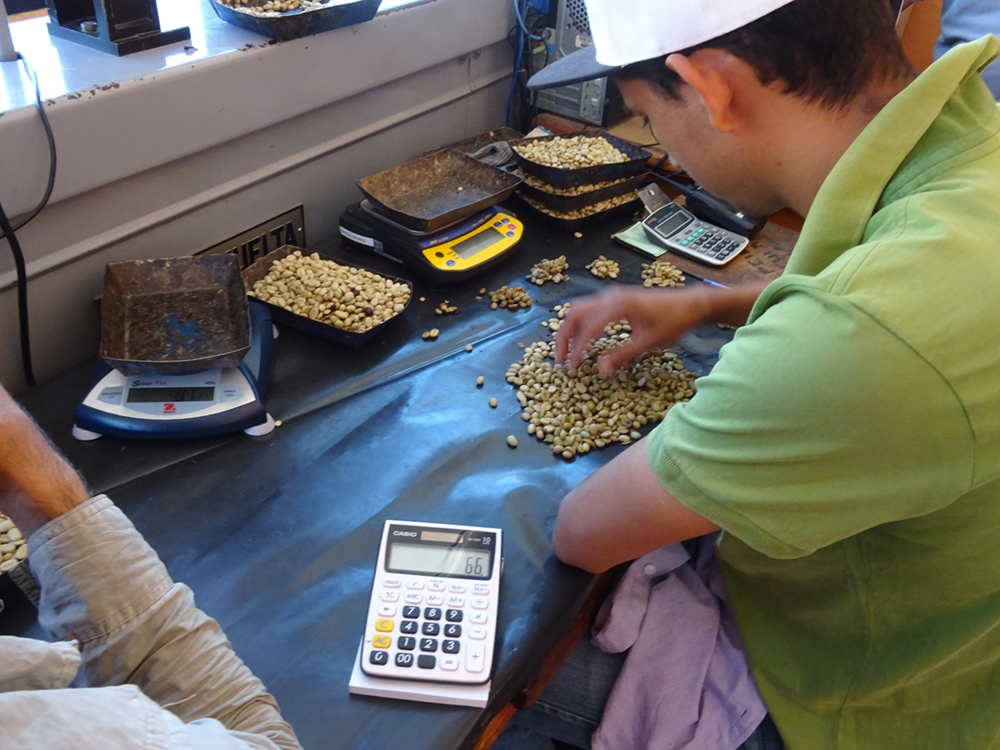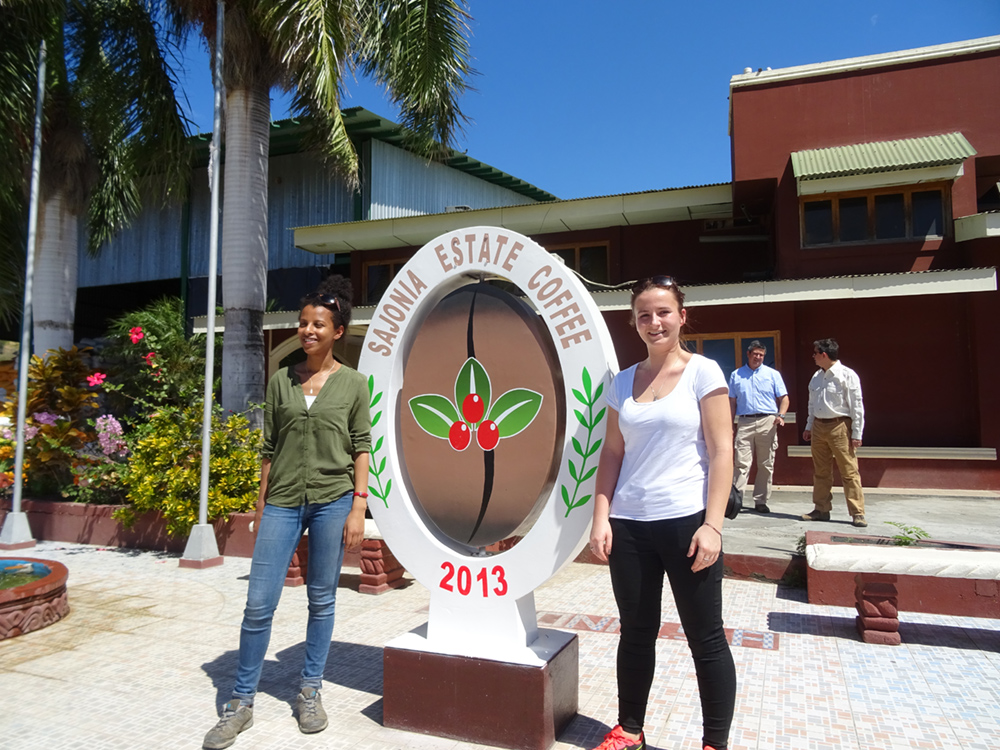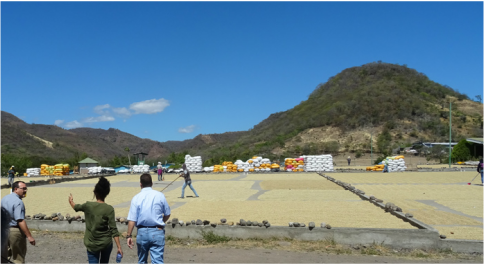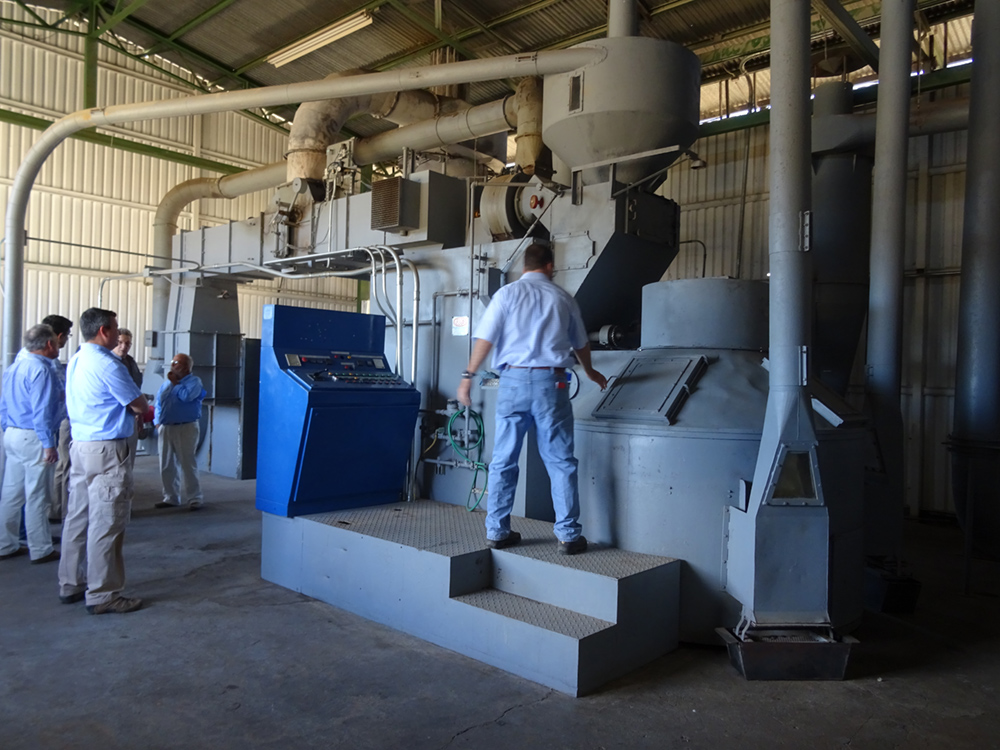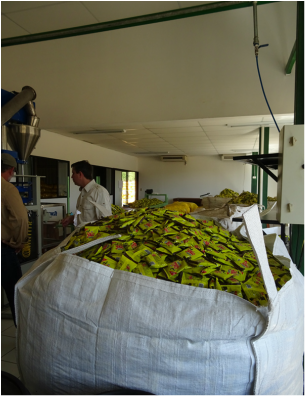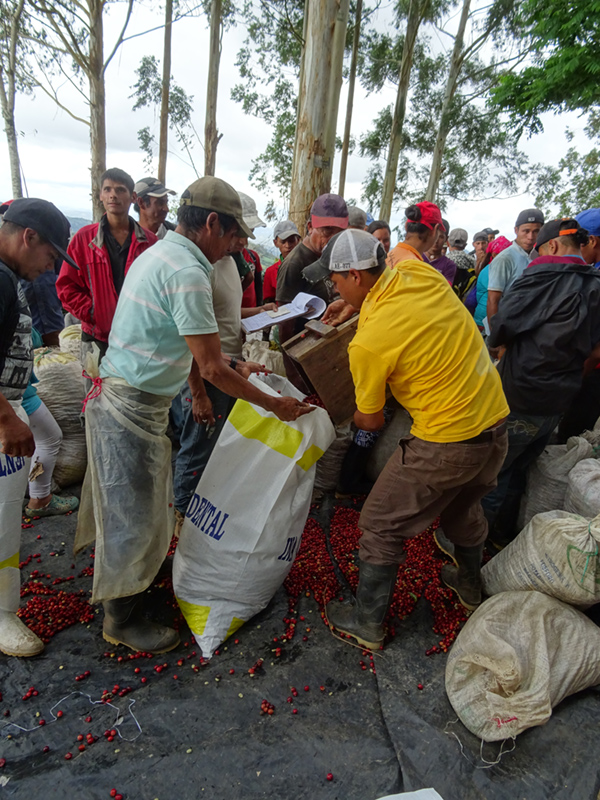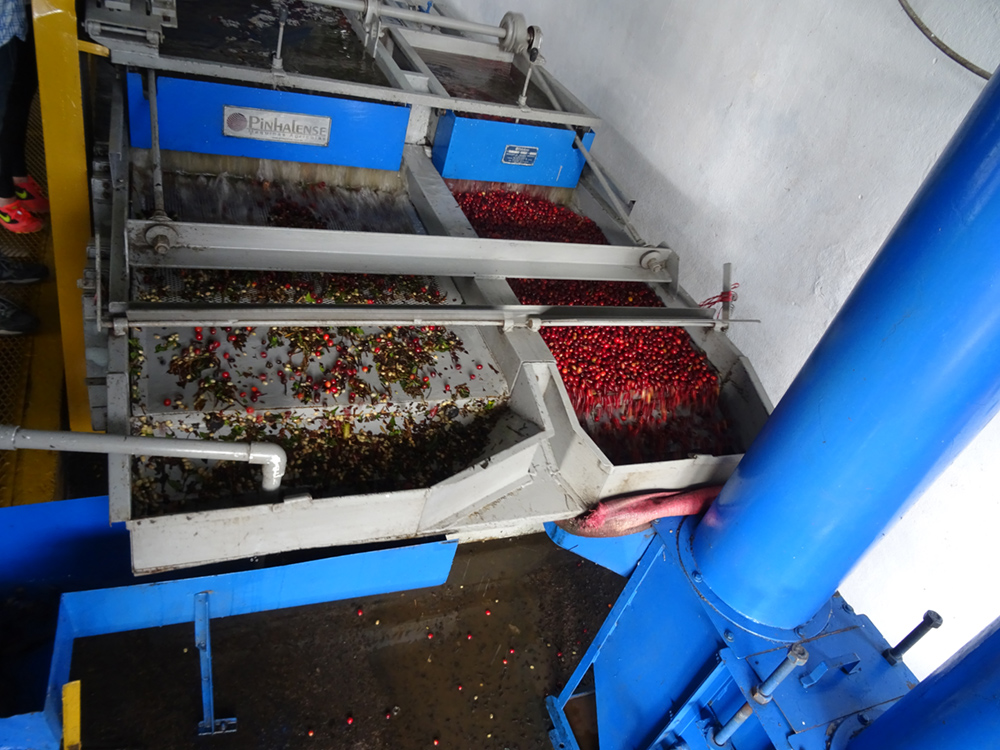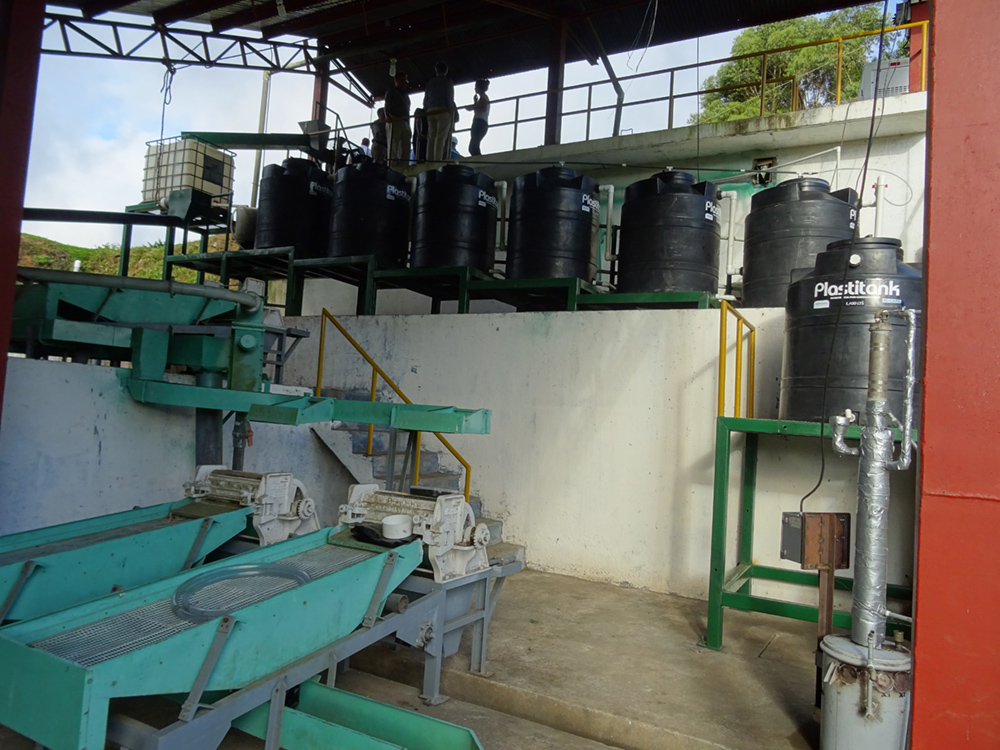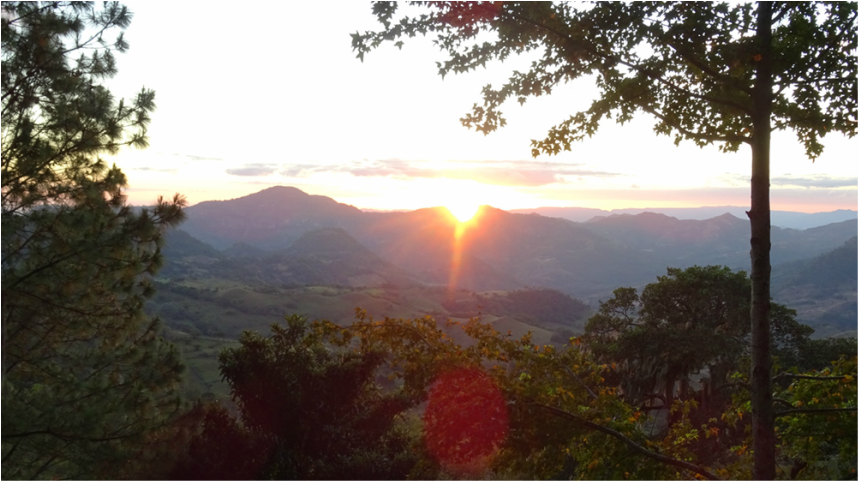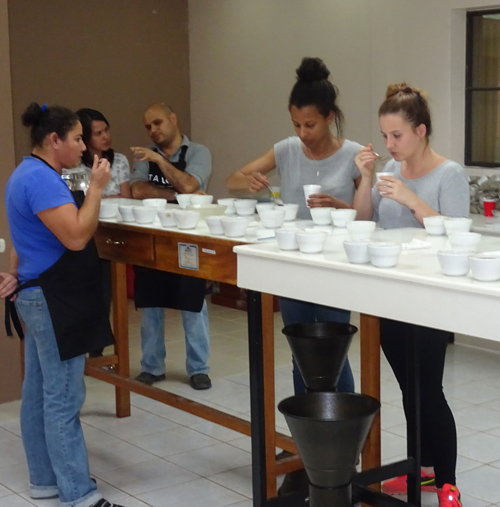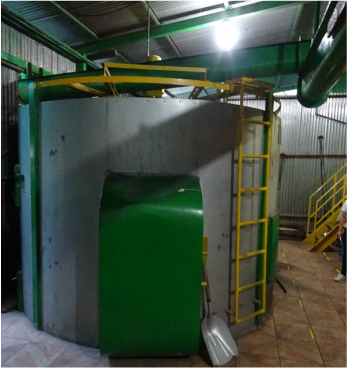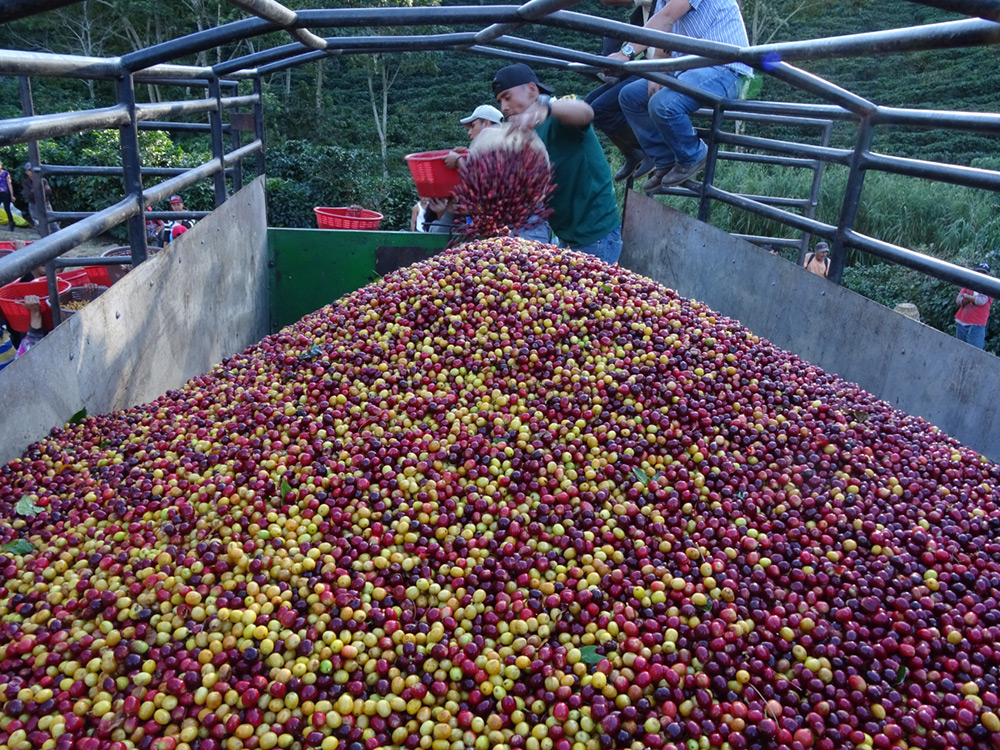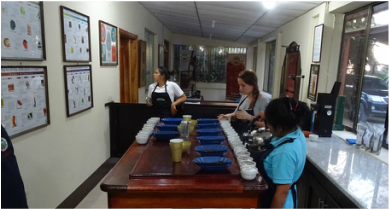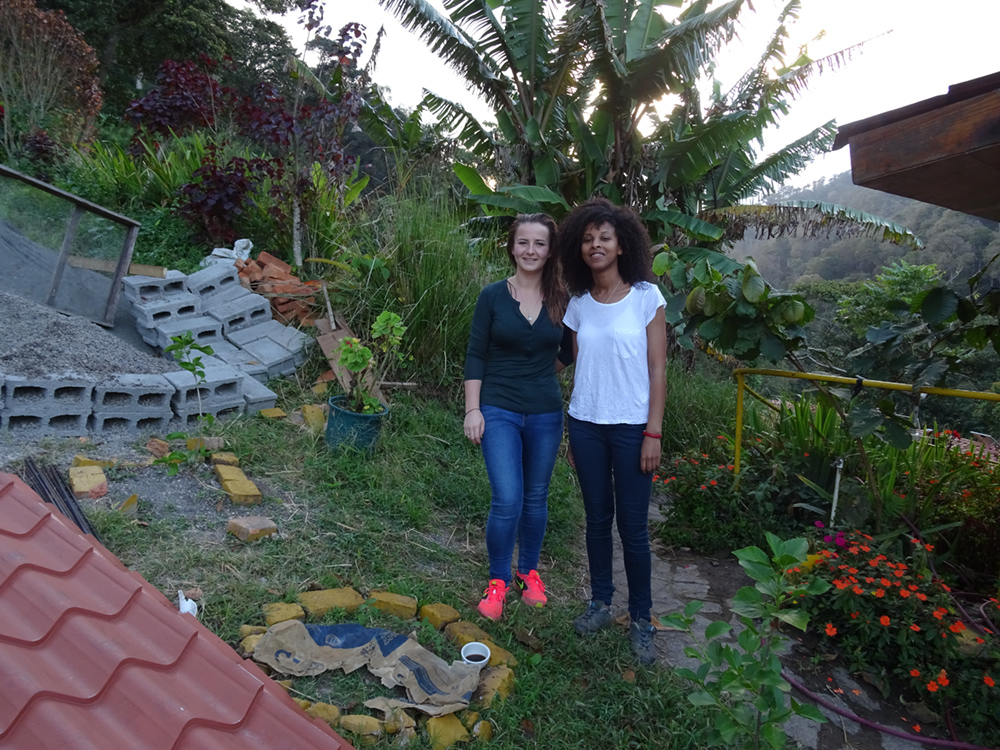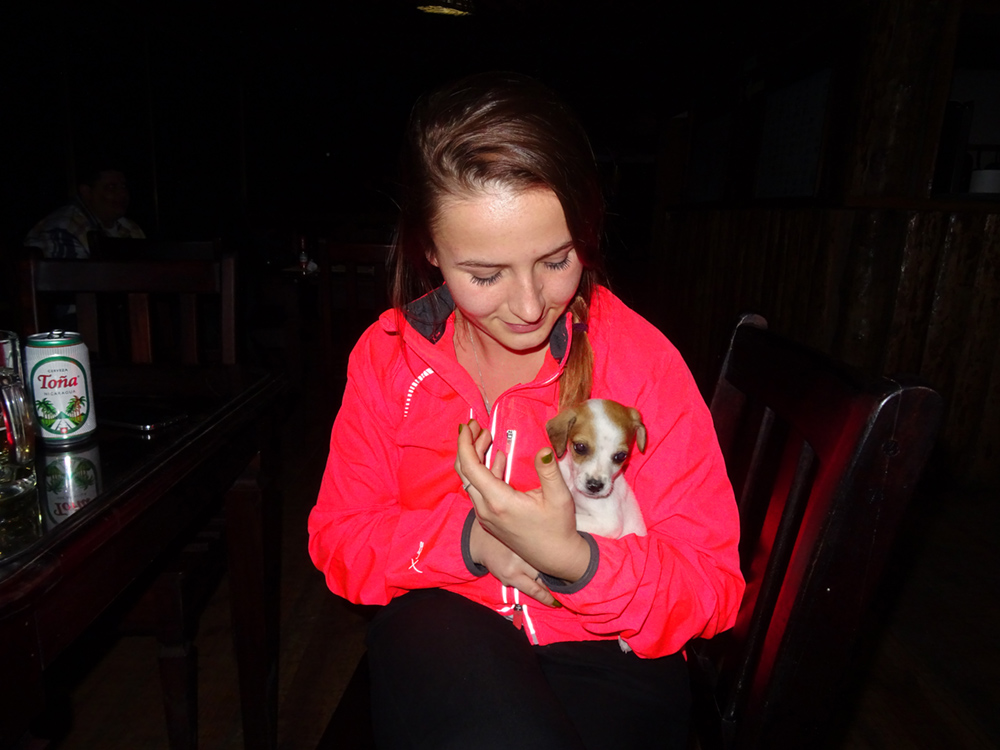|
Marie-Anne Rogers (Coffee buyer) and Alicia Fieldhouse (Sales Support and Technical) visit South America.
As with other mills, coffee is laid out to dry in separate lots with ID numbers and is turned regularly to ensure an even drying out process in the scorching Nicaraguan sun (the hottest it had felt for us during the whole trip!) Unusually, they also produce a roasted product mixed 50/50 with a very sweet, fine powder (also produced in Nicaragua). It is a 25g product and is marketed as being able to provide 8 cups of coffee, extremely cheap but very popular with workers who like their coffee black and very sweet.
Although the time we spent in Central America flew by, it was such an eye-opener for myself and a great learning curve, I will return to work with renewed enthusiasm and a wider understanding of the product I work with every day. There couldn’t have been a more worthwhile trip to be involved in and I feel extremely privileged. And so to the long journey home. We had our last picture taken outside the lodge, bid our goodbyes to Natalija and Tobé the puppy and set off on our way. In 24 hours’ time, we would be arriving back to the UK, tired and in need of a good shower but full of information and enthusiasm. Alicia Fieldhouse
|
MasteroastA collection of articles written by the dedicated staff of Masteroast Archives
April 2022
Categories
All
|
Our ServicesCoffee SourcingDesign ServiceQuality Assurance |
|
|
Copyright © 2024, Masteroast Coffee Company Ltd, 01733 842000
|
|

